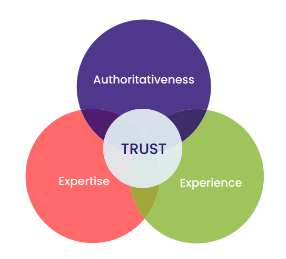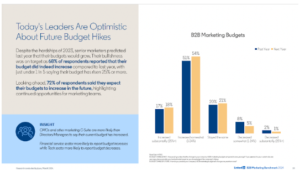One of the big reasons why Google revolutionized search engines when it launched in 1998 was its PageRank algorithm, which rewarded pages based on how many other websites were linking to them.
Evaluating links has proven such a reliable method for understanding content quality that after nearly 20 years and hundreds of updates, they remain one of Google’s most valued ranking signals.
It’s little wonder that link building has been a crucial element of SEO ever since. By taking the following steps to develop your SEO link building strategy, you can put together a plan to grow your website’s authority and drive valuable referral traffic from key sources.
Why is link building valuable for SEO?
To understand how to create an effective SEO link building strategy, you have to know what makes link building valuable in the first place.
Improved search rankings
The quality of a page’s backlinks is one of the main factors search engines consider when awarding SERP placements. The more relevant, authoritative sites link to your content, the more trustworthy and useful Google will consider it.
Improved brand visibility and high-quality traffic
If you have links on popular sites that are related to your content, audience members on those sites will find your content more frequently and organically. You’ll start receiving more attention from the right people, and those people will start to recognize your brand as an important voice in your category.
Improved trust and credibility
If trustworthy sites are willing to link to your content, it shows both search engines and your audience that you’re considered credible. The better your backlinks, the more trustworthy your site looks.
Partnerships and relationship-building
To build credibility and brand recognition within any category, you’ll need your audience to understand how you relate to (and stand out from) your peers. Link building is one of the best ways to do this.
By earning links from other trustworthy sites in your category, you’re also starting mutually beneficial relationships with these sites. By connecting your audience members via links, you can both gain trustworthiness and authority while solidifying the differences between your brands.
What makes a link valuable?
In modern SEO, the quantity of the links you receive matters much less than the quality of those links. An effective SEO link building strategy doesn’t just try to get as many links as possible; it gets the right kind of links from the right kind of websites.
Search engine algorithms evaluate what makes a link valuable using hundreds of factors. Though they keep these factors secret to prevent exploitation, companies like Google have provided generalized explanations of their evaluation process. From those guidelines, SEO experts have extrapolated several of the primary evaluation metrics.
Relevance
Search engines consider the contextual relevance of the links to your site above any other consideration. The more useful the link to the user clicking on it, the more valuable the search engine will consider it.
For example, if you’re running a site about computer software and you receive a link from a site about something completely unrelated like lawn care, then that link probably won’t count for much. Meanwhile, a link from a highly relevant site like a software review service might prove highly valuable.
When it comes to your SEO link building strategy, consider relevance your main objective.
Authority
A page’s authority refers to how trustworthy search engines consider it within its category. The higher a page’s authority, the more valuable a link from it is, as long as that site and link are both relevant to your content.
Search engines like Google also keep the exact calculations they use to determine a site’s authority a secret, but there are SEO tools that can approximate how Google will evaluate a site’s authority, such as Semrush’s Authority Score and Moz’s Domain Authority.
Authority is a great secondary consideration for your link building strategy. Consider relevance first, and then try to find the most relevant sites that also have the highest authority.
6 steps to developing an SEO link building strategy
1. Identify the most relevant link opportunities in your category
Focus on quality over quantity and start by evaluating relevance. Highly-relevant links are from sites that are well known in your category and directly related to your subject matter.
Consider which sites your ideal audiences visit right now for information related to what you offer, then put together a plan for how you could earn links from these sites.
2. Cross-check authority with relevance
After you put together a list of the most relevant sites, cross-check it by site authority. You can use SEO tools like Semrush and Moz to find the leading authorities in your category.
Your best opportunities will be highly relevant domains with authority scores (according to Semrush) of 50 or above. Organize these opportunities from highest to lowest to create a backlink “wishlist.”
3. Compare your list to competitors’ links
Create a list of your competitors and begin checking their site’s links against your wishlist. Various SEO tools can provide backlink analysis features to make this process much faster.
Identify overlapping link sources with your competitors, adding their successful sites to your wishlist. Evaluate and include any valuable links your competitors have that you initially omitted, and seek differentiation by pursuing links on your wishlist that your competitors lack.
4. Build long-term relationships
The tried-and-true way to earn backlinks is by producing great content and raising your domain authority. Align your content strategy with your audience’s pain points and produce content that is inherently valuable to link to expedite this process.
Consider reaching out to your biggest opportunities directly. You could start a mutually beneficial relationship with these brands or influencers by trading links or even collaborating on future content.
5. Optimize your internal linking structure
The more easily search engines can find, organize, and index your site’s content, the easier they can deliver the right pages to the relevant SERPs. The more frequently they do this successfully, the more authoritative they will find your content. Smart internal linking structure will also help you pass page authority to the rest of your linked pages.
When optimizing your internal linking, prioritize user experience above all. Make your website as intuitive for someone to navigate as possible by minimizing the number of clicks it takes to get to any given piece of information, clearly labeling all links, and making links easy to find.
6. Maintain and improve over time
Review your SEO link building strategy as frequently as you check on your SEO results.
Continue to maintain and update your internal linking structure for user friendliness as your site continues to expand. Identify your highest-performing content and determine why it resonated with your audience so you create similar content in the future. Update your backlink wishlist with wins and new opportunities, and continue reaching out to the most valuable sites you identify.
By following these six steps, you’ll be well on your way to creating an SEO link building strategy that helps Google and other search engines find your site, raises your brand’s authority, and puts your content in front of the right people for the right reasons.
Learn more about how SEO fits into a broader B2B marketing strategy.
The post The 6 Fundamentals of an SEO Link Building Strategy appeared first on B2B Marketing Blog – TopRank®.
Source: feedburner.com



